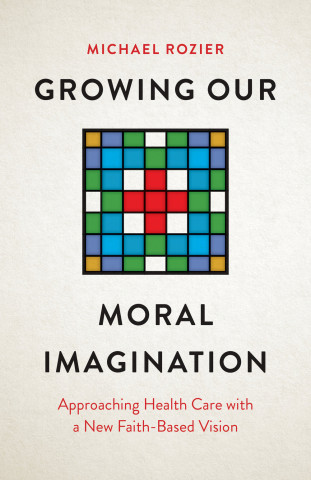
Reviews
A masterful, timely, data-driven edited volume on gun control policy options in the U.S. The contributors use a public health lens to examine gun violence and explore issues ranging from mental health concerns to suicide.... The strength of this book is the mixed-method approach in compiling information on many policy options related to gun control, which utilizes case studies and quantitative evidence to make the case for policy change.... The contributors are optimistic and lay out concrete policy options in ways that are both sophisticated and easily accessible to all.
An anthology of studies, condensing and summarizing the actual state of our knowledge about the subject of gun violence in this country—what real, tested social science shows.
Surprisingly accessible and startlingly grim. Thankfully, the editors have done an excellent job organizing the material, which moves from current policy shortcomings to proposals for federal reforms. The debate that's raging might leave you feeling hopeless, which this book suggests otherwise.
This is a 'must' for any concerned about gun control.
We’ve all heard the saying that when arguing we should ‘disagree without being disagreeable’ but, when it comes to guns, we often find ourselves disagreeing without actually disagreeing. Most Americans believe in some kinds of gun control. Most Americans recognize the ‘right to bear arms’. Most agree that expanded background checks can be useful in keeping guns out of the hands of dangerous or irresponsible people. Considering that there is so much agreement on basic policy, what the gun debate desperately needs is sober clear-headed analysis. Reducing Gun Violence in America edited by Daniel Webster contributes greatly to this need.
The rate of firearms homicides in America is 20 times higher than it is in other economically advanced nations. We have got to change that.
Gun violence is a public health issue. It's about the health of our children, our schools, our neighborhoods, our communities, our cities and towns. Perhaps there is no way to completely prevent the next tragedy, but that cannot be an excuse that keeps us from doing commonsense things such as preventing violent crime, locking up bad guys, and keeping assault weapons from falling into the hands of disturbed people who are a danger to others. This isn't about ideology. It's about dignity.
Book Details
Foreword
Preface
Acknowledgements
Introduction
Part I: Gun Policy Lessons From the United States: Keeping Guns From High-Risk Individuals
Chapter 1. Firearms and Violent Death in the United States
Chapter
Foreword
Preface
Acknowledgements
Introduction
Part I: Gun Policy Lessons From the United States: Keeping Guns From High-Risk Individuals
Chapter 1. Firearms and Violent Death in the United States
Chapter 2. The Limited Impact of the Brady Act: Evaluation and Implications
Chapter 3. Preventing Gun Violence Involving People with Serious Mental Illness
Chapter 4. Evidence for Optimism: Policies to Limit Batterers' Access to Guns
Chapter 5. Reconsidering the Adequacy of Current Conditions on Legal Firearm Ownership
Chapter 6. Broadening Denial Criteria for the Purchase and Possession of Firearms: Need, Feasibility, and Effectiveness
Chapter 7. Comprehensive Background Checks for Firearm Sales: Evidence from Gun Shows
Chapter 8. Preventing the Diversion of Guns to Criminals throughEffective Firearm Sales Laws
Chapter 9. Spurring Responsible Firearms Sales Practices through Litigation: The Impact of New York City's Lawsuits against Gun Dealers on Interstate Gun Trafficking
Chapter 10. Curtailing Dangerous Sales Practices by Licensed Firearm Dealers: Legal Opportunities and Obstacles
Part II: Making Gun Laws Enforceable
Chapter 11. Enforcing Federal Laws against Firearms Traffickers: Raising Operational Effectiveness by Lowering Enforcement Obstacles
Part III: Gun Policy Lessons From the United States: High-Risk Guns
Chapter 12. America's Experience with the Federal Assault Weapons Ban, 1994– 2004: Key Findings and Implications
Chapter 13. Personalized Guns: Using Technology to Save Lives
Part IV: International Case Studies of Responses to Gun Violence
Chapter 14. Gun Control in Great Britain aft er the Dunblane Shootings
Chapter 15. Rational Firearm Regulation: Evidence- based Gun Laws in Australia
Chapter 16. The Big Melt: How One Democracy Changed aft er Scrapping a Third of Its Firearms
Chapter 17. Brazil: Gun Control and Homicide Reduction
Part V: Second Amendment
Chapter 18. The Scope of Regulatory Authority under the Second Amendment
Part VI: Public Opinion on Gun Policy
Chapter 19. Public Opinion on Proposals to Strengthen U.S. Gun Laws: Findings from a 2013 Survey Consensus Recommendations for Reforms to Federal Gun Policies
Biographies of Contributors
Index
Additional Resources
CLICK HERE TO DOWNLOAD A FREE PDF OF REDUCING GUN VIOLENCE IN AMERICA.
CLICK HERE TO DOWNLOAD A FREE PDF OF UPDATED EVIDENCE AND POLICY DEVELOPMENTS ON REDUCING GUN VIOLENCE IN AMERICA.
Jon Vernick interview, ABC 2 News: Senate concurs with House version of gun bill
JHU Press Blog post: Johns Hopkins University Hosts Summit on Reducing Gun Violence in America
Featured in PW: JHU Press Publishes First Instant Book In Response to Gun Violence
Interview on WRNR radio with Daniel Webster
Daniel Webster speaking at the National Press Club
Daniel Webster interview on NPR
Jon Vernick interview, ABC 2 News: Senate concurs with House version of gun bill
Daniel Webster on The Diane Rehm Show discussing gun violence and Washington Navy Yard shootings
CNN Opinion piece: Keep guns out of dangerous hands
Reducing Gun Violence in The New Yorker
Daniel Webster on WYPR's Midday with Dan Rodricks, May 30, 2014
Daniel Webster on PBS Newshour: Two Years after Sandy Hook, how have gun laws changed?






